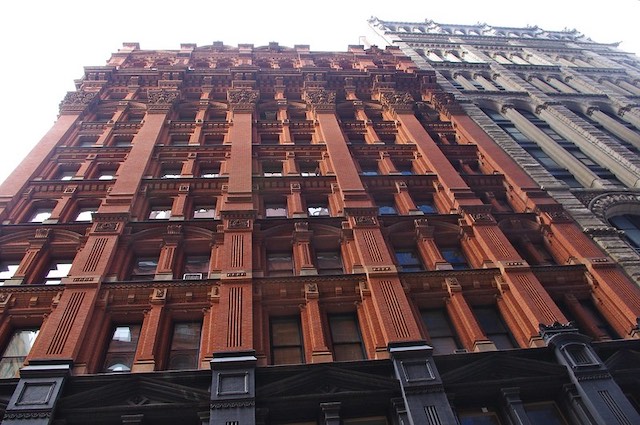Here’s evidence, if anyone needs it, that rent control contributes to housing scarcity: a new report says that more than 13,000 rent-controlled apartments have been vacant for at least two years. Nearly 90,000 rent-controlled apartments were vacant in 2021 and more than 60,000 were still vacant in 2022.
Manhattan apartment building. Photo by David Merrett.
When people leave a New York City rent-controlled apartment, landlords are allowed to raise the rent for the next occupants by $89 a month. Too often, that’s not enough to pay for the repairs and other work needed to make the apartment attractive to new renters. As a result, the apartments sit vacant, waiting for the owners to sell or, less likely, for the rent control law to be repealed.
New York is far from the most expensive housing market in the country — according to both Zillow and census data, even Bend, Oregon is more expensive — but it’s still pretty expensive. The city and some of its suburbs have enjoyed rent control since World War II, when the federal government implemented price controls. When those controls ended after the war, the state took over and rent control has been around ever since.
Lefty economist Paul Krugman has described rent control as “among the best-understood issues in all of economics, and — among economists, anyway — one of the least controversial,” noting that a survey once found that 93 percent of economists agree that in the long run rent control reduces both the quality and quantity of housing. Some rent control advocates disagree, pointing out that some cities in California, including San Francisco, “have had rent control on their books for decades.” This would be more persuasive were it not for the fact that housing in those cities is even less affordable than it is in New York.
It is worth noting that non-profit affordable housing groups such as Habitat for Humanity support rent control. No wonder: if rent control limits the willingness of private developers to build more housing, then groups like Habitat can argue for more subsidies to affordable housing — some of which those groups will receive. Subsidized affordable housing is already rent controlled, so Habitat loses nothing by arguing that other housing should also be rent controlled.
Unfortunately, too many people still see rent control as a solution to high housing prices. Oregon, for example, passed a rent control law in 2019. Such laws benefit some existing renters today at the cost of making housing more expensive for everyone in the future.









New York will spend 5 billion a year on thousands of migrants, 52K per person.
thousands Maui Residents lost their homes, they got 700 bucks and a grandpa story about how Biden almost lost his kitchen…..
80 million votes?
Rent stabilized apartments, not rent controlled. @antiplanner
If indefinite rent stabilization is ruled unconstitutional, far more apartments than 90,000 will eventually come onto the market because a lot of landlords will re-convert some floors back into apartments that were previously converted into other uses.
In other NYC news, The MTA
‘s capital plan invests $5.2 billion to make 67 subway stations ADA accessible, more than any capital plan in the MTA’s history.
5.2 BILLION…. 77 million per station or 50 million dollars per elevator.
#ThisIsCriminal
WordPress_ anonymous: What’s the difference?